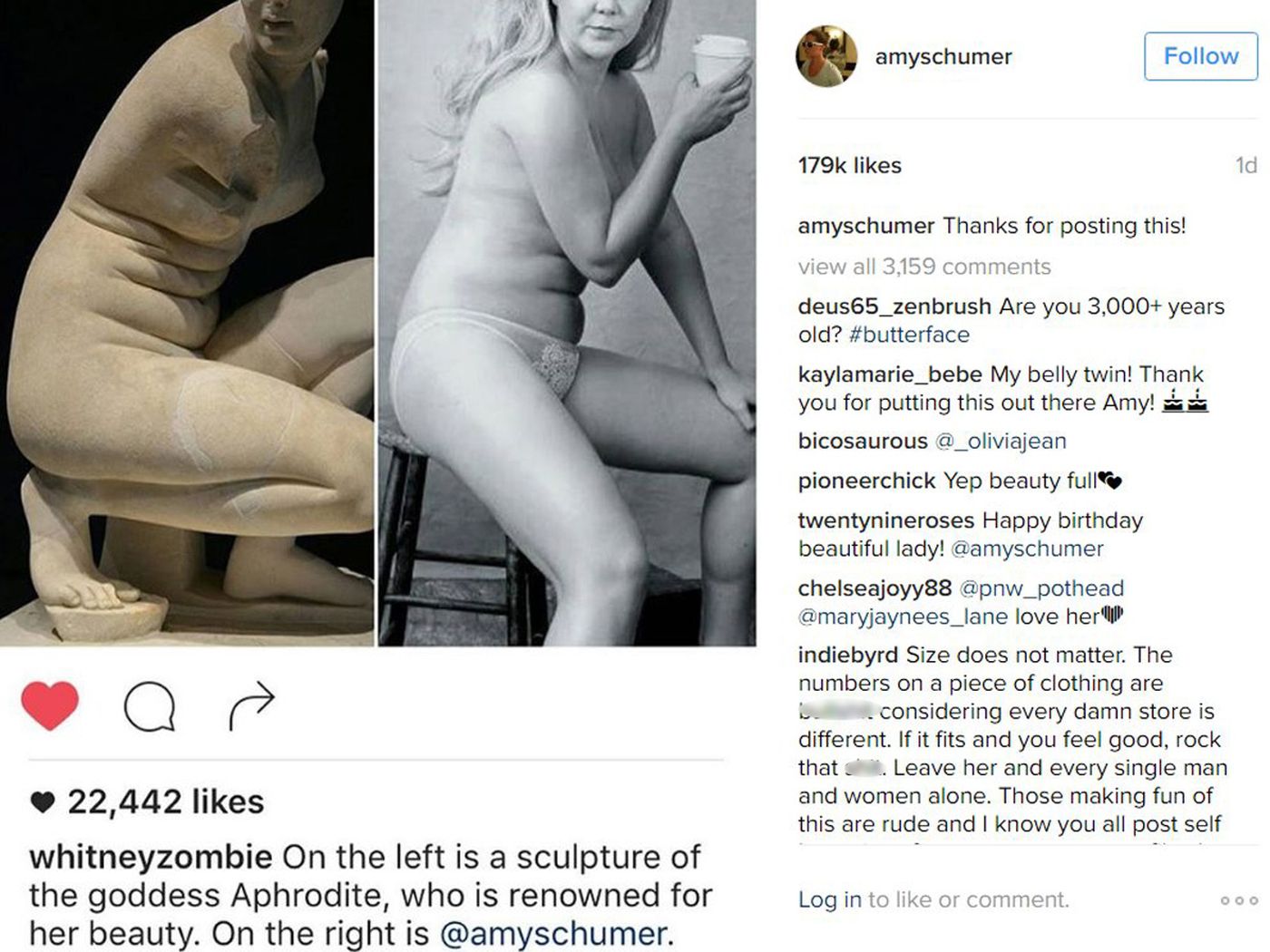According to a recent study by the Pew Research Center, 72percent of teens use Instagram. For a fifth of that percentage, the primarily visual application is teens’ most frequently used app.
During formative teen years, impressionable young minds begin to craft perceptions of their own bodies based on the images they’re exposed to. Whereas visual representations of the “perfect” life used to reach consumers exclusively through television shows, music videos and ad campaigns, smartphone users now have access to “perfection” in the palms of their hands.
Social media grants teens a supposedly candid look at the lives of their favorite celebrities. Unfortunately, constant exposure can lead to followers comparing professional photos of physically “perfect” celebrities to their own, unedited lives.
Because Instagram users are tantalized by unattainable physical ideals, many tend to take matters into their own hands and change aspects of themselves. Some alter their appearance to remedy a feature they perceive is undesirable through cosmetic surgery to look more like one showcased online. Others alter their mindset and learn to appreciate their own bodies regardless of whether or not their physicalities align with societal definitions of beauty.
Social media makes a strong impression on teens, because, as Bo Burnham’s topical “Eighth Grade” illustrates, they’re on their phones a lot. A 2015 story by CNN revealed that some teens checked their social media accounts up to 100 times a day. And although trends like “going unplugged” or taking a “social media detox” have become common, three years later, CNN’s data seems unsurprisingly realistic.
Within the Instagram universe, many powerhouse accounts are run by “social media influencers.” As a result of having amassed a large social media following, Instagram influencers have an impact on the way their followers think and feel.
Eating disorders are a very real issue for a lot of young people and to see Kim Kardashian actively encouraging her fans to develop an unhealthy relationship with food is terrifying and gravely concerning. pic.twitter.com/hhFYBbm8hL
— Dr Liam Hackett FRSA (@DiageoLiam) May 16, 2018
An influencer’s overwhelming power is in their ability to constantly reach a large audience. In addition, influencers are posting with a frequency that’s usually equal to the number of times users check their social media accounts. For some users, seeing evidence of “perfect” lives and “perfect” bodies can have significant effects on the way they perceive their own existences and physicalities.
A recent report from the American Academy of Facial Plastic and Reconstructive Surgery showed the type of concrete impact that Instagram influencers have made on current societal beauty standards. The report states that 55 percent of patients sought out facial plastic surgery because they wanted to look better in selfies. Rightfully so, the AAFPRS deems social media a “cultural force, not fad.”
Furthermore, coincidentally Insta-famous “Dr. Miami” Michael Salzhauer told Highsnobciety about the cultural force that is social media: in the early 2000s, women of younger ages rarely went under the knife. He correlates the 55 percent selfie-motivated increase with the fact that young people compare themselves to models they follow on Instagram, public figures that utilize visually appealing angles and poses, and have entire teams devoted to making their posts look a certain way via photo alteration, which might not be evident to viewers.
It’s clear that having an all-access pass to portrayals of the lives of others can make users want to change either their own lives, or themselves. The photos posted on follow-heavy accounts can provoke reactions of jealousy or shame from their followers and most negative consequences are out of influencers’ control.
However, some social media stars make an intentional effort to route the ways in which their posts and overall brands are received by followers. A host of Instagram influencers, and users, are advocates of the body positivity movement. Generally speaking, body positivity celebrates all types of bodies and aims to promote inclusive self-love and acceptance for all. A recent piece on the movement by Shape Magazine explains that body positivity was “created to help people with marginalized bodies (read: fat, queer, trans, bodies of color, and more) feel entitled to self-love, something that had previously been reserved for people in privileged (read: thin, white, fit) bodies.”
To counteract the harsh truth that self-love was previously granted exclusively to “privileged” bodies, the body positivity movement has infinitely expanded societal definitions of beautiful. And, a body positivity lifestyle encourages you to appreciate the body you’re in, and it asks that you embolden others to do the same.
Body positivity has most recently hit its stride using Instagram as a platform. Recently, posts that expose both the specific poses, angles, and editing that go into widely “liked” posts on the app have become popular within body positive community. In many ways, the body positivity movement does discredit the types of images that might urge some to consider plastic surgery.
This past week, model and powerful Instagram influencer Iskra Lawrence was praised by followers for posting a side by side of two selfies, one of which was edited while the other was not. Lawrence asked followers to compare the two images, cautioned Instagram users not to take any of the posts they see on the app at face value or feel a need to change themselves.
https://www.instagram.com/p/BmgJXJChNxo/?taken-by=iskra
Hence, the body positivity movement and the widespread trend by teens to get plastic surgery are born of the same beast: photo-focused social media that emphasizes users’ physical attributes. Their seemingly shared origin begs the question: how is cosmetic surgery reconciled with the body positivity movement? Both are responses to societal messages and standards regarding one’s appearance.
On the surface, the body positivity movement and cosmetic surgery appear to be in fundamental conflict. While one celebrates the unique physical traits of all types of bodies, the other allows for an avenue to change them. In fact, many feel that plastic surgery merely puts a price on self-acceptance and is a disgraceful submission to unrealistic beauty standards.
With this in mind, it might seem that physical change by choice would be obsolete or unacceptable amidst such dynamic cultural shifts that have transformed societal ideals of beauty. But, the two trends don’t necessarily clash when considered in a more collective context.
To immediately write off plastic surgery as a legitimate way of achieving self-acceptance would be to reject a pillar of the body-positive movement: recognizing that everyone is entitled to self-love because the right to celebrate one’s own body is not contingent on societal standards of physical attractiveness. Obviously, body positivity runs counter to encouraging others to undergo plastic surgery to remedy their perceived current physical inadequacy. However, body positivity is understanding and accepting that making changes to one’s physical appearance can be a method to achieve self-love.
Body positivity and plastic surgery don’t cancel each other out; in fact, the former can be inclusive of its supposed enemy. The movement declares that everyone, no matter their physical appearance or alterations to it, is entitled to self-love.

















